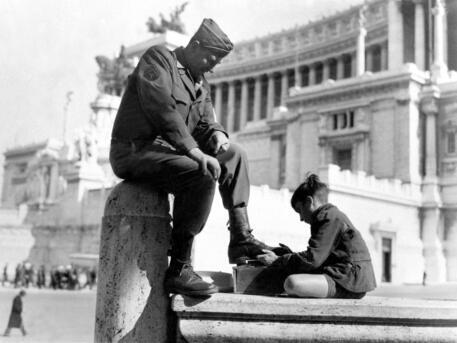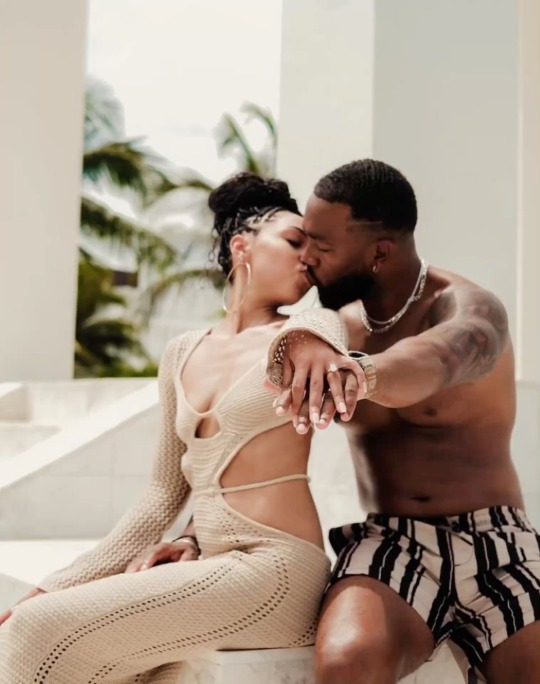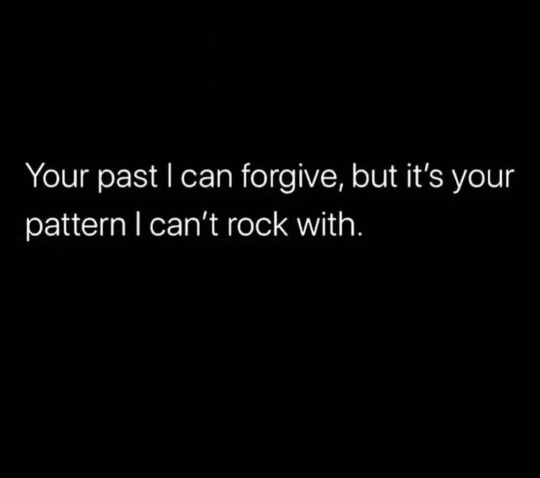#point of view
Text

-----
Il 25 Aprile in una immagine.
Da allora, nei ruoli, nei gesti e negli intenti non è cambiato nulla.
35 notes
·
View notes
Text
What to give a fuck about,while writing your first draft!
I`ve posted a list about things you don´t need to give a fuck about while writing your first draft. Here are things you NEED TO CARE about! (in my opinion)
Your Authentic Voice: Don't let the fear of judgment or comparison stifle your unique voice. I know it´s hard,but try to write from your heart, and don't worry about perfection in the first draft. Let your authenticity shine through your words.
Your Story, Your Way: It's your narrative, your world, and your characters. Don't let external expectations or trends dictate how your story should unfold. Write the story you want to tell.
Progress Over Perfection: Your first draft is not the final product; it's the raw material for your masterpiece. Give a fuck about making progress, not achieving perfection. Embrace imperfections and understand that editing comes later.
Consistency and Routine: Discipline matters. Make a commitment to your writing routine and stick to it.
Feedback and Growth: While it's essential to protect your creative space during the first draft, be open to constructive feedback later on. Giving a f*ck about growth means you're willing to learn from others and improve your work.
Self-Compassion: Mistakes, writer's block, and self-doubt are all part of the process. Give a f*ck about being kind to yourself. Don't beat yourself up if the words don't flow perfectly every time. Keep pushing forward and remember that writing is a journey.
Remember, the first draft is your canvas, your playground. Don't bog yourself down with unnecessary worries.

#writing#writblr#writing advice#writers block#just writer things#creative writing#fanfiction writing#writing motivation#writeblr#original writing#writing reference#writing tips#writers on tumblr#writing resources#writing tip#writing encouragement#writing community#writers#world building#point of view#editing#character creation#dialogue#mine.#words#writingtips#writingadvice
4K notes
·
View notes
Text

#love#positive#motivation#strong#positive life#positive mental attitude#get motivated#mindfulness#point of view#words#reality#poetry
2K notes
·
View notes
Text
In case anyone still needs them, here are the new unreleased 2003 Taylor Swift songs that just surfaced. Genius and other lyric sites aren't allowing the lyrics to be uploaded yet, so I included lyrics too.
Same Girl (previously leaked)
Baby Blue (not previously leaked)
Never Fade (previously leaked)
Fire (not previously leaked)
Mary Jo (not previously leaked)
My Turn To Be Me (previously leaked)
Kid In The Crowd (not previously leaked)
I Used To Fly (previously leaked)
Lucky You - acoustic version (not previously available)
Point Of View (previously leaked)
Why Do You Tell Me? (not previously leaked)
Houston Rodeo (not previously leaked)
A Little More Like You (not previously leaked)
One-Sided Goodbye (not previously leaked)
Ride On (not previously leaked)
Smokey Black Nights - acoustic version (not previously available)
Half-Way To Texas (not previously leaked)
Beautiful Days (not previously leaked)
Your Heart's Somewhere Else (not previously leaked)
Lucky You - Mix (previously leaked)
Smokey Black Nights - Mix (previously leaked)
#taylor swift#taylor swift unreleased#same girl#baby blue#never fade#fire#mary jo#my turn to be me#kid in the crowd#i used to fly#lucky you#lucky you acoustic#point of view#why do you tell me#houston rodeo#a little more like you#one sided goodbye#ride on#smokey black nights#smokey black nights acoustic#halfway to texas#beautiful days#your heart's somewhere else#lucky you mix#smokey black nights mix
1K notes
·
View notes
Text
Lamborghini aventador svj 👌
#luxury car exótico lamborghini aventador original post point of view beutiful fotografia videography cars carstagram#luxury car#exótico#lamborghini#videography#automoviles#cars#autos#view#bugatti#koenigsegg#luxury#carstagram#lamborgini aventador#lamborgini urus#car exporter#ferrari#luxurious#viralpost#point of view#aston martin#maserati#bugatti veyron#rolls royce
497 notes
·
View notes
Text

Notes from a 5-day creative writing course:
Motivation
Make it a habit. That way, each time that familiar voice of self-doubt makes its appearance, it’ll be easier to ignore it, because writing will become something that you do-your thing-and you’ll gain confidence in it.
Visit your novel every single day. It doesn’t necessarily mean that you have to write something every day. You could outline the plot, or write character portraits, or draw a special part of your world. Your subconscious will work on your story even when you don’t. So, each time you visit the story consciously, you’ll find that things have developed in the story.
Manage the time of writing in a way that it is manageable for you. (It can be that one hour between classes or your lunch break or the morning before you go to work or at night before you sleep - Schedule it in a way that suits you and then, be serious about it.
Set a goal. For example, 100 or 500 words a day.
Character Development, Word Choice & Description
At first, characters incarnate ideas. A poor man who wins the lottery, a young boy who travels to a magical land. As we develop the story, they become people - real people with backgrounds and unique choices.
Ways we perceive character: through actions, thoughts (conflict), dialogue, interactions with others.
Bring intentionality to the representation of a character. Don't give arbitrary information.
How a character reacts is a question of how you want to represent them through all those multiplicities that are dialogue, actions, interactions, etc.
Characters always want something. They are never static. With wants come obstacles and transformation.
Create tension between what a characters thinks, feels and says. For example, set external confidence and internal fear and then change that as the story develops. Characters can also be comfortable or scared depending on the situation.
Explore complexity. How a character talks to their lover is different from how they talk to their friends and family.
Give secondary characters a characteristic beyond their function to make them more prominent.
Make a hierarchy out of characters.
Exercise: Write the portrait of a character, how you would introduce them in the story and a description of them from a character that a) likes them and b) dislikes them.
Word Choice. When it starts sounding like writing, cut it out - Kill your darlings. Example: The car was spotted with rust - shows the car. As opposed to: The car was acned with rust - shows the writing. Sometimes a more refined word works against the object/image.
Description: Don’t just put in details. The details need to be significant for the image you want the reader to see.
Don’t use metaphors and lyricism in the expense of clarity. Be precise. Metaphors and similes should fit the narrative and not distract the reader. For example, saying “He barked like a dog” sounds fine, but if there are no dogs in your world, it is out of place and breaks the narrative. Be specific. Name things. Don’t be vague. Precision grounds your fiction.
Determine if you need static or lively description. Lively description is when you describe things through actions. Like “She passed her fingers through her blond hair”, instead of “Her hair was blond”.
Sense of authenticity. When you describe a place precisely, you gain your reader’s trust. A column is different from a golden column. That kind of attention gives a sense of authority and makes the narrative convincing.
Parts of description: smell, sound, sight, taste, touch, temperature, pressure.
Dialogue & POVs
Dialogue a) informs the character, b) moves the story forward, c) develops relationships between characters.
Dialogue isn’t just about how people talk.
What’s said can suggest what isn’t being said.
Use dialogue interspersed with description and visuals.
Choose the POV that suits your story.
(From David Lodge, ‘The Art of Fiction’.) A fictional story is unlikely to engage our interest unless we know whose story it is. Even with an “omniscient” narrative method, the writer should privilege one or two “points of view”. An objective approach may be a worthy aim in journalism, but not in fiction.
Pros and cons of 1st person POV. Pros: personal and direct, immediacy, intimacy, immediate credibility, easier to build character. Cons: limited, biased, unreliable, writing can become simplistic. When writing in 1st person, keep in mind that characters change, hence their perception changes. That has to be obvious in the narrative.
Pros and cons of 3rd person limited POV. Pros: thoughts can still be on the page, flexibility, wider view of the world, more complex language can be used (usually we think in simple words, so complex writing might sound pretentious and out of place in 1st person POV). Cons: distance (he/she).
GOD MODE. Or, commonly, 3rd person omniscient. You can jump in and out of characters’ minds, but there’s a danger when writing with such freedom. Be aware of structural harmony. Don’t write 10 pages in Sally’s POV and then jump into omniscient.
Use free indirect speech (1st person thoughts in italicized form, eg. No!) to eliminate the distance in 3rd person POVs.
Change POV with reason. Don’t suddenly jump to another POV just because it is interesting. Plan it. Make the change of the POV deliberate and make the reason clear.
Give equal weight to all POVs.
Setting
The setting of a story is mediated through a character’s experience. It amplifies the theme. It shouldn’t be an arbitrary decision. The setting can make achievements more difficult for characters.
For children, places have magical properties, they are places of significance. The place of someone’s childhood can transform later in the novel, because the character has transformed. There’s a fluidity of meaning attached to places. But keep in mind that, places don’t change. Characters do.
How a character views a place is stated through the language we use.
When writing about a place that exists, have fidelity at the facts.
Editing
Be open to ideas changing.
If it’s not working after 3-4 rewrites, cut it out!
Make sentences active. Things don’t happen to characters. They do things.
Pay attention to rhythm.
Every sentence needs to have a reason to be there.
Usually, we overwrite in dialogue. Use context. Dialogue should be suggestive, rather than explicit.
Edit backwards, because perfectionism kicks in at the beginning.
Isolate. Edit single parts of the story. A chapter, a scene.
Read aloud. It will help find long sentences, pretentious words and unreadable language.
When words become over-familiar, put it down, give it to someone else to read.
What to look out for: a) Character confusion. Make sure minor characters are introduced properly and find subtle ways to remind your readers who they are. b) Too much exposition. c) Plot holes, inconsistencies - there must rational reasons for coincidences, you must be able to provide logical and credible reasons behind the actions of a character. d) Over-written description.
What to do when editing: cut things out, put new things in, change sentence order and structure, look for repeated words, strengthen verbs (or prune), expand, trim, look for continuity errors, change order of events, introduce a delay in the reveals, rewrite using another POV or tense, determine if each sentence is pulling its weight.
Techniques: a) Prune. Delete text you don’t need. b) Isolate repetitions and delete or substitute with synonyms (look out for pretentious words). c) Cut and paste paragraphs to change order and rearrange. d) write a whole new draft, only looking to the previous one for factual material. e) Use a reader.
Bibliography
Hills Like White Elephants, by Ernest Hemingway (suggestive dialogue)
Concrete Island., by J.J. Ballot (how setting makes goals harder to achieve)
Driving Through Sawmill Towns, by Les Murray (lyricism, setting)
The Art of Fiction, by David Lodge (POV)
The Great Gatsby, by F. Scott Fitzgerald
On Writing, by Stephen King
#writing#writing reference#writing tips#writing advice#writers on tumblr#writing resources#writing tip#writing motivation#writing encouragement#writeblr#writblr#creative writing#writing community#writers#world building#point of view#editing#character creation#dialogue#mine.
2K notes
·
View notes
Note
I want to write a story, but i cannot decide on which pov/person i should write. I feel like first person would be perfect, but then i want to keep certain informations secrets to the readers, so i thought maybe third person, but it’s not as fluid as first person is… how do i choose? Any tips?
Choosing point of view for your story
I am in the unique position of having exactly what you need. Here is my series of Guides on Point of View which detail my main tips, resources, and answered questions about each option as far as POV:
Guide to Writing First Person Point of View
Guide to Writing Third Person Point of View
Guide to Writing From Multiple Points of View
and some additional resources:
Pros & Cons of Different Points of View
Showing VS Telling in First Person POV
There is an absence of s guide to second person because it is much less common, but I would be happy to create it if readers show some interest
Best of luck,
x Kate
252 notes
·
View notes
Text
POV: You finally meet your soulmate and receive the love that you've always desired, after healing from heartbreak/trauma and almost giving up on love. 🥰🩷




#black tumblr#aesthetic#aesthetics#black aesthetic#source: pinterest#pinterest#black love aesthetic#black love#pure love#love and affection#love#lovers#pov#point of view#manifest#manifesation#manifesting#law of attraction#speaking into existence#black couples#couple aesthetic#couples#brown couples#love is beautiful#gentle love#brown women#brown men#love aesthetic
144 notes
·
View notes
Text

Finally got around to posting this, it was like a week ago I made this xD
ANYWAYS my boys' first meet! Atm I can't explain much about this situation cause ☆spoilerssssss☆
But hopefully, I'll be able to show you guys some of the actual story for these two soon. ^^
Hope you guys have an amazing day! ✌️ peace
#gt#giant tiny#giant#gianttiny#gt community#digital art#gt art#g/t#gt fluff#tiny#oc backstory#human oc#ocs#g/t ocs#oc art#my ocs#oc#artists on tumblr#point of view#original character#original art#dawn#ciel and donovan#ciel#stained glass#old building#vines#friendly giant#gentle giant#giant/tiny
304 notes
·
View notes
Text
Good morning
#mature woman#hot as fuck#sexy titts#babesofinstagram#babes#so hot 🔥🔥🔥#hotwives#perfect wife#hot as hell#beauty legs#dem bewbs#bewbz#nice bewbs#bewbsfordays#great bewbs#bewbies#maturesexy#beautiful mature#point of view#pov amature#onlyf@nz#onlyfans creator#adult model#adult actress
418 notes
·
View notes
Text
I'd love to see me from your point of view


#fairy tail#lucy heartfilia#nalu#natsu dragneel#artists on tumblr#natsu x lucy#lucy x natsu#illustration#fairy tail nalu#nalu headcanon#pov#i’d love you forever#boop#booping#this is love#so this is love#point of view
137 notes
·
View notes
Text
What not to care about while writing
Writing can be difficult.Here are some basic things i learned to NOT give a fuck about while writing your first draft!
Grammar and spelling in your first draft.
What others might think of your story.
The length of your story; it can be short or long.
Writing every detail - leave room for the reader's imagination.
Whether your story aligns with current trends or popular genres.
Overthinking the title or cover art at the beginning.
Perfect pacing in the initial draft.
The order in which you write scenes - you can rearrange later.
Trying to make every character likable or relatable.
Writing the perfect first draft; let your first draft be really messy.#

#writing#writblr#writing advice#writers block#just writer things#creative writing#fanfiction writing#writing motivation#writeblr#original writing#writing reference#writing tips#writers on tumblr#writing resources#writing tip#writing encouragement#writing community#writers#world building#point of view#editing#character creation#dialogue#mine.#words#writingtips#writingadvice
2K notes
·
View notes
Text

#positive#motivation#strong#positive life#positive mental attitude#get motivated#mindfulness#point of view#mindset#motivating quotes#true words#words#personal
743 notes
·
View notes
Text

Maybe if we can open up to the idea that people are not right or wrong. They are just different from us, they have had different experiences, they see things in their unique way. Embracing differences could open us to understanding, compassion and acceptance. I would love to see a world where we embrace difference and being right or wrong is just a point of view, not a truth for all.
K.S. Janes
139 notes
·
View notes
Text
The Biggest Differences Between Points of View
Sometimes stories flow from our minds. They jump onto paper when we channel our creativity, announcing themselves without plans or outlines. Other times, we have to make specific choices before putting pen to paper. Picking between the different points of view is one of them.
These are the biggest differences you should know about to choose the best POV for your next manuscript.
First-Person Point of View
First-person point of view happens when a protagonist tells the story from their perspective. It focuses on their experiences and understanding of things, while leaving out the direct input of other characters.
First-person POV uses “I” or “we”
It lets the reader in on the protagonist’s thoughts and feelings
It sticks with the protagonist’s understanding, opening the possibility for an unreliable narrator or plot twists as your protagonist learns new information later.
Second-Person Point of View
Second-person point of view happens when the author addresses the reader through their narrator. It brings the reader directly into the story and occurs less frequently in fiction manuscripts because readers generally want to experience stories, not feel involved.
Second-person POV uses “you” to address the reader.
It talks to the reader directly, like: “You sat in the room and listened to your brother talk.”
It doesn’t appear in fiction very often because readers don’t want to be actively involved in fiction novels. They also haven’t experienced the story.
You may only use this POV if you write fanfiction that purposefully involves the reader.
Third-Person Point of View
Third-person point of view happens when the narrator isn’t involved in the story. It includes pronouns like “he,” “she,” and “they” to describe characters. Writers use this to provide objective narration or an outside perspective so readers never fully understand what goes on in a character’s mind until the character or plot reveals it.
This POV also has three types:
Third-person omniscient: The narrator knows each character’s thoughts and feelings. People often relate this to the narrator being a god figure because they’re all-knowing.
Third-person objective: The narrator uses third-person pronouns, but doesn’t access the characters’ thoughts and feelings. The reader gets an objective view of the plot while the characters' outward words and actions further the emotional undertones.
Third-person limited omniscient: The narrator knows each character’s thoughts and feelings, but spends most of the time with the protagonist. The author has more choice over which character’s inner workings get revealed and at what time.
Point of View FAQs
What does point of view mean?
Point of view describes how a writer tells their story. All three offer different strengths and weaknesses, depending on the story you want to write.
What is an example of writing from an unusual point of view?
Writing from the second-person point of view would be most unusual in a traditional fiction story setting. Readers don’t pick up books to get themselves personally involved in the plot. It works better in fanfiction settings.
How do you pick a point of view?
You can pick a point of view for your story by going with your gut or reviewing the purpose of your plot. Sometimes stories have obvious perspectives, so we know how it’s going to translate on paper.
Other times, writers have to consider what they’re about to write. A manuscript that needs an unreliable narrator to deliver key plot twists might go with first-person POV or third-person limited-omniscient POV.
If you’re writing a story that jumps perspectives between more than one character, third-person POV could provide the omniscient tools you need to convey each different mindset clearly. You could also use a limited-omniscient point of view to jump mindsets while staying just within each narrator’s mind. The other characters around them would have minds that are off-limits to the narrator.
You don’t need to pick one point of view and never stray from it. If it feels wrong while you’re writing, edit what you’ve already written to morph it into another POV. Writers do this all the time. It’s one of the creative freedoms you have in your writing practice.
-----
Try not to stress too much about memorizing the different types of point-of-view or picking one for your next manuscript. You can always switch POVs by reworking your draft if you need to. They’re all great options. It just depends on what you’re writing, the plot elements that are most essential to your story, and what experience you want to create for the reader.
#point of view#writing point of view#pov#writeblr#writing advice#writing tips#writers of tumblr#creative writing#writing inspiration#writing#writing community#writing help#writing resources
227 notes
·
View notes
Text
Writing Advice: Third Person Point of View - The Problem with Head-Hopping
A personal pet peeve in fanfic—and even some published books, unfortunately—is an author head-hopping.
I understand that not everyone learned about writing point of view in primary school, and many fanfic writers are new to writing and might not even realize they're writing head-hopping.
So, this post is an educational means for those who are interested in learning how to improve their writing.
I'm going to give a quick overview of point of view, a breakdown of third person point of view, and how to spot head-hopping in your writing.
What Is Point of View?
Point of view (POV) is the perspective (voice) from which a story is narrated.
There are three POVs.
First person
Second person
Third person
Third Person: Limited vs. Omniscient
In third person POV, the author is narrating the story through third-person pronouns (she, he, they).
Third person POV is subdivided into two categories: third person limited and third person omniscient.
Third Person Limited
In third person limited, the narrator is an external observer who knows the thoughts and feelings of ONE character at a time.
Here's an example from R.F. Kuang's, The Poppy War, page 341:
The Cike were stretched to their limit, especially Rin. Each moment not spent on an operation was spent on patrol. And when she was off duty, she trained with Altan.
Note that this paragraph—the entire book, actually—is from Rin's POV. We have access to Rin's feelings, thoughts, and observations throughout the book, while also seeing how other characters are acting.
But we are only in Rin's head. We do not have access to the thoughts and feelings of other characters. This is third person limited POV.
Third Person Omniscient
In third person omniscient, the narrator is an all-knowing observer who has access to the thoughts, feelings, and experiences of ALL characters in the story.
Here's an example from Jane Austen's, Pride and Prejudice, page 104:
As they drove to Mr. Gardiner’s door, Jane was at a drawing-room window watching their arrival; when they entered the passage she was there to welcome them, and Elizabeth, looking earnestly in her face, was pleased to see it healthful and lovely as ever.
Notice how we have access to both Jane and Elizabeth's 1) physical locations, and 2) thoughts. Even though Elizabeth is in a carriage and Jane is inside a house, the narrator is all-knowing and can narrate both of them at the same time.
The problem I see from many fanfic writers: they attempt to write in third person omniscient when they're actually writing shoddy third person limited, constantly switching between the POVs of multiple characters.
This is called head-hopping.
Head-Hopping vs. Omniscient
Head-hopping is when an author shifts between the POVs of multiple characters without a scene break. Meaning, the author is inside Character A's head but abruptly—and randomly—shares the thoughts, feelings, and/or observations of Character B.
Here's an example:
Kathy arrived at the cafe in hopes of showing Brittany her completed sweater. It was the first time she had knitted and she was eager to share her hard work with her best friend.
Brittany took one look at the sweater and cringed. She hated it, but she didn't want to hurt Kathy's feelings. She didn't know what to say.
In this example, we are inside both Kathy and Brittany's heads. Both characters have distinctive voices, and because of this, the narration of the story is inconsistent.
It's jarring to read, and pulls you out of the story.
Here's the same example written through omniscient POV:
Kathy arrived at the cafe with the intent to show Brittany her completed sweater. After hours of hard work, the opinion of her best friend was important. At Kathy's approach, Brittany observed the sweater in her friend's hand and wrinkled her nose. The sweater was hideous.
In this example, we are inside the head of the narrator. The narrator is telling the story through its voice, rather than the individual voices of Kathy and Brittany.
Remember: Omniscient means the reader is inside the NARRATOR's head, not the characters'.
The Scene Break to Denote POV Switch
Back to my definition of head-hopping: Head-hopping occurs when a writer suddenly switches POV without a scene break.
Like the first example of Kathy and Brittany—there is no scene break between their thoughts. If the author wanted to write from both Kathy and Brittany's perspective, the author would have to include a physical break to alert the reader to a switch in POV. See below:
Kathy arrived at the cafe in hopes of showing Brittany her completed sweater. It was the first time she had knitted and she was eager to share her hard work with her best friend.
~~~~~~~~~~
Brittany took one look at the sweater and cringed. She hated it, but she didn't want to hurt Kathy's feelings. She didn't know what to say.
The squiggly lines demonstrate a switch in POV, and the scene would then continue in Brittany's POV. [Please note that a single paragraph space (as seen in the first example of Kathy and Brittany) is not a scene break. It is a paragraph break, and therefore cannot be used to demonstrate a switch in POV.]
You can write multiple POVS throughout a story. These will all be in third person limited POVs.
For example, each chapter in Rick Riordan's Heroes of Olympus series is dedicated to ONE character. Throughout that chapter, the reader is inside the head—reading the thoughts, feelings, and observations—of that singular character.
Individual chapters can also have multiple POVs (again, these are third person limited POVs). These are denoted by a divider or additional paragraph space.
For example, Timothy Zahn's Thrawn switches between the POVs of multiple characters in each chapter. The switch between his characters' POV is shown by an additional paragraph space.
Why Should You Care about Head-Hopping?
If writing head-hopping makes you happy, then keep at it. It's fanfic, and most readers are so desperate for content they don't care.
But, if you're interested in improving your writing, here are a few reasons why head-hopping is problematic:
It's jarring to the reader, and takes them out of the story. Frequent head-hopping can confuse readers as they struggle to keep track of whose perspective they are currently experiencing. It disrupts the flow of the narrative and can make it challenging for readers to form a strong connection with any one character.
It makes it harder for readers to truly immerse themselves in your story. Consistent use of a single POV allows readers to immerse themselves in the story's world through the eyes of a specific character. Head-hopping disrupts this immersion by constantly pulling readers out of one character's perspective and into another's.
It hinders character development. When the narrative constantly shifts between characters, there may not be enough time or focus on any one character's growth and development.
It takes away the emotional impact of the scene. Head-hopping can prevent readers from fully empathizing with or understanding any particular character's emotions, motivations, and inner conflicts.
Even well-established authors struggle to write omniscient without head-hopping. It's a nuanced subject that can be confusing to understand and difficult to overcome.
Again, this post is simply to inform writers about third person point of view and the subtle differences between its subdivisions. It’s not an attack on fanfic writers.
#writing advice#writing tips#writing fanfic#point of view#third person pov#omniscient pov#head-hopping#limited pov
148 notes
·
View notes